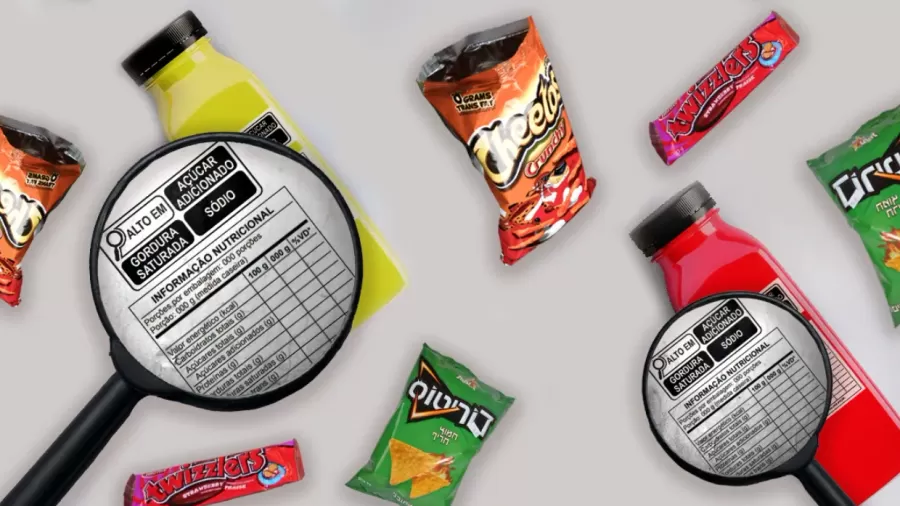Why did it change?
As there were no laws on this subject, it was common for some manufacturers to “disguise” some information that is harmful to health as a marketing strategy, making it difficult for consumers to read and understand the information on the labels.
A practical example is, a consumer who needs to reduce their sugar consumption, when going to the supermarket decides to buy a juice in a box, thinking it is a natural and healthy option, and the vast majority of these juices are industrialized with a high sugar content.
Consumers began to feel disadvantaged by not being able to identify this information clearly and understand the impact on their health when consuming the products they were buying, which is why in October ANVISA determined these new rules.
What are the main changes?
Front-of-pack nutrition labeling:
Products that are high in sugar, fat and/or sodium must add a magnifying glass to the front of the packaging, in the upper part of the packaging, for easy viewing. This provides simplified information about large amounts of nutrients that can harm your health, without having to turn the label over.
Check out the models:

Products that exceed the following are considered for inclusion in the front magnifying glass:
| High content of | Solid foods | Liquid foods |
|---|---|---|
| Added sugar | 15 g or more per 100 g of food | 7.5 g or more per 100 ml of food |
| Saturated fat | 6 g or more per 100 g of food | 3 g or more per 100 ml of food |
| Sodium | 600 mg or more per 100 g of food | 300 mg or more per 100 ml of food |
It is worth noting that the size of the front magnifying glass varies according to the label.
New nutritional table:
Another change that has a significant impact on packaging is the change in the nutritional table. Check out the changes:

Nutritional information: the information on total and added sugars is a rule (highlighted as red in the image above), nutrients per 100g or 100ml (highlighted as blue B), the percentage of daily values provided by the serving (highlighted as brown C) and the number of servings per package (highlighted as green D).
List of ingredients: The nutritional table must be placed next to the list of ingredients, on the same surface, and cannot be divided or located in hidden, deformed or difficult to see areas. Except for small packages, smaller than 100cm².
Colors and contrasts: The new rule states that the letters in the table must be black only and the background must be white. The purpose of the change is to eliminate the possibility of manufacturers choosing colors that could make the information difficult to read.
Deadlines for adapting new labels:
| Compliance period | Product types |
|---|---|
| October 9, 2022 | New products entering the market after 10/9/22 |
| October 9, 2023 | Food in general that is already on the market. |
| October 9, 2024 | Food produced by family farmers or rural family entrepreneurs, solidarity economic enterprises, individual microentrepreneurs, small-scale agroindustry, artisanal agroindustry and artisanally produced food. |
| October 9, 2025 | Non-alcoholic beverages in returnable packaging, observing the gradual process of replacing labels. |
Our conclusion on the changes:

This rule is beneficial and encourages consumers to carefully evaluate the products they choose on the shelf and understand how they impact their health.
While reducing the opportunity for “malicious” manufacturers to camouflage relevant information in order to make a greater profit.
The consumer has the right to information, and this regulatory process for nutritional labeling defined by ANVISA is a necessary procedure, relevant to consumer safety and protection.
Source: ANVISA website






